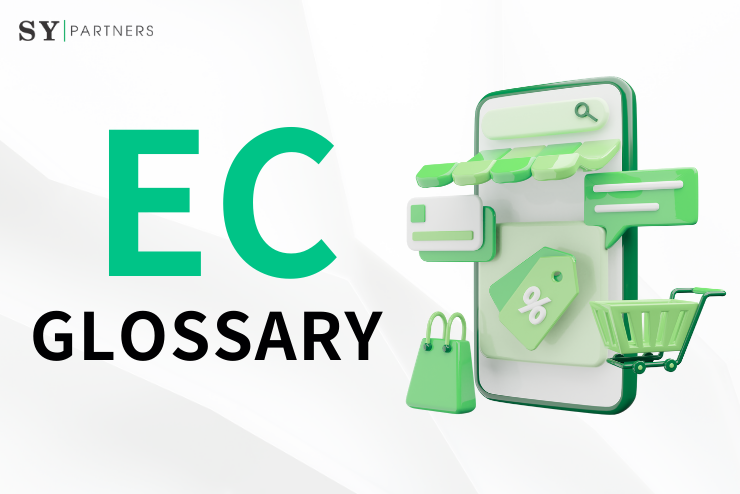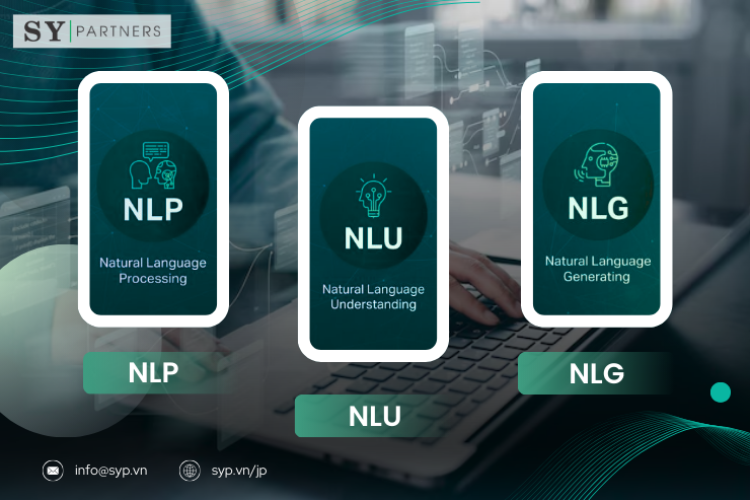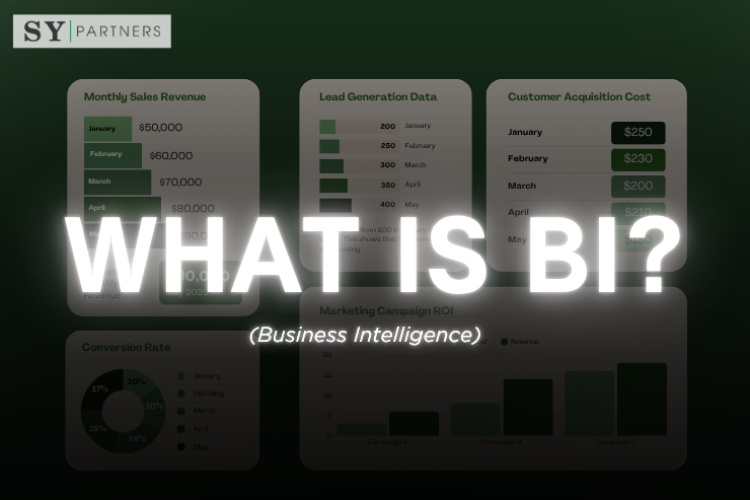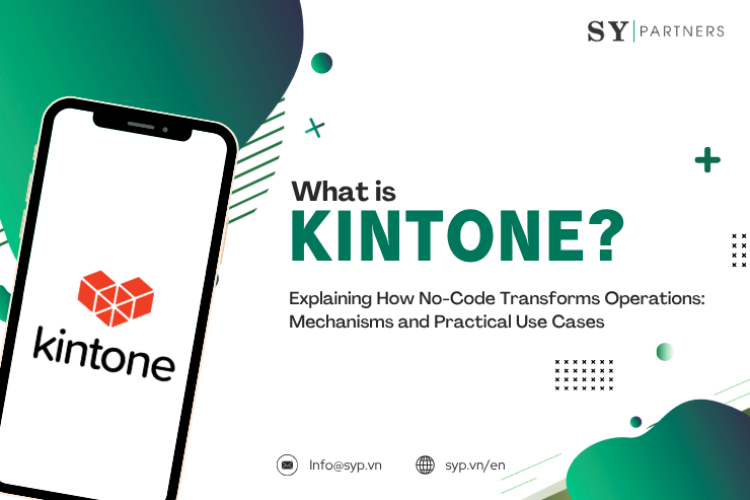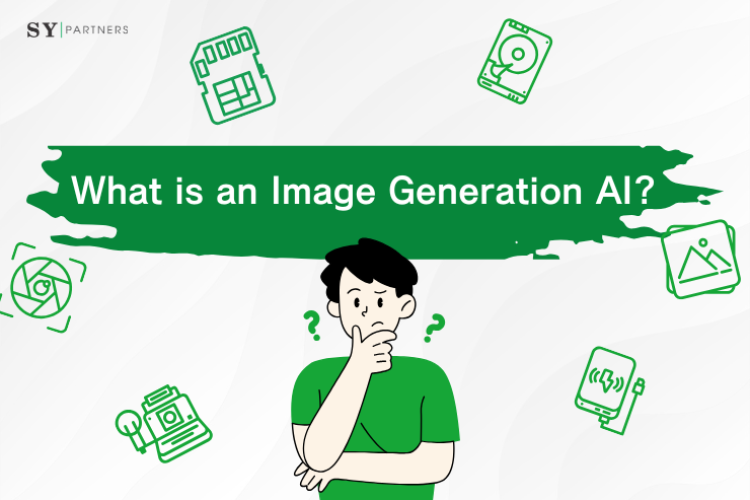E-commerce (EC) is an essential means for businesses to expand sales and acquire customers. However, operating an EC site involves many specialized terms—such as “SKU” and “Fulfillment”—that can be difficult for beginners to understand.
In this article, we will explain carefully selected EC terms that help you grasp the essence of e-commerce and can be immediately applied in practice. Each term is linked to challenges in logistics, marketing, and systems, with concise explanations of how they contribute to improving business efficiency and increasing sales.
A
| Term | Definition |
|---|
| Abandoned Cart | When a customer adds items to their cart but leaves the site without completing the purchase. |
| A/B Testing | A method of comparing two versions of a webpage or app to determine which performs better. |
| Acquisition Cost | The total expense of acquiring a new customer, often called Customer Acquisition Cost (CAC). |
| Affiliate Marketing | A performance-based marketing strategy where affiliates earn commission for driving sales. |
| API (Application Programming Interface) | A set of rules that allows software applications to communicate and exchange data. |
| Average Order Value (AOV) | The average amount spent each time a customer places an order. |
B
| Term | Definition |
|---|
| Backorder | An order for a product that is temporarily out of stock but will be delivered when available. |
| Banner Ad | A graphical display ad placed on websites to drive traffic or conversions. |
| Bounce Rate | The percentage of visitors who leave a website after viewing only one page. |
| Brand Loyalty | The tendency of customers to continuously purchase from the same brand. |
| Bundling | The practice of selling multiple products together as a single package. |
| Buyer Persona | A semi-fictional representation of your ideal customer based on research and data. |
C
| Term | Definition |
|---|
| Call to Action (CTA) | A prompt that encourages users to take a specific action, such as “Buy Now.” |
| Cart Abandonment Rate | The percentage of shoppers who add products to their cart but do not complete the checkout. |
| Cash on Delivery (COD) | A payment method where customers pay when they receive the product. |
| Churn Rate | The rate at which customers stop doing business with a company. |
| Click-Through Rate (CTR) | The ratio of users who click on a specific link compared to the number who view it. |
| Conversion Rate | The percentage of visitors who complete a desired action, such as making a purchase. |
| Cross-Selling | Recommending related or complementary products to increase sales. |
| Customer Lifetime Value (CLV) | The total revenue expected from a customer over the entire relationship. |
D
| Term | Definition |
|---|
| Data Feed | A file that provides product information to platforms like Google Shopping. |
| Demand Generation | Marketing activities aimed at creating awareness and interest in a product. |
| Digital Wallet | An electronic device or service that allows individuals to make transactions online. |
| Direct-to-Consumer (DTC) | A model where brands sell directly to customers without intermediaries. |
| Discount Code | A promotional code that gives customers a price reduction at checkout. |
| Dropshipping | A fulfillment method where the retailer does not keep products in stock but ships directly from suppliers. |
E
| Term | Definition |
|---|
| eCommerce Platform | Software that enables businesses to build and manage online stores. |
| Email Marketing | The use of email to promote products, build relationships, and drive sales. |
| Engagement Rate | A metric measuring user interaction (likes, comments, shares, etc.) with digital content. |
| ERP (Enterprise Resource Planning) | A system that integrates business processes like inventory, finance, and supply chain. |
| Exit Rate | The percentage of users who leave a site after viewing a specific page. |
| Express Checkout | A simplified checkout process allowing customers to complete purchases faster. |
F
| Term | Definition |
|---|
| FAQ (Frequently Asked Questions) | A page or section addressing common customer questions. |
| Fulfillment | The process of preparing and delivering customer orders. |
| Funnel | The stages a customer goes through from awareness to purchase. |
| Fraud Detection | Techniques used to identify and prevent fraudulent transactions. |
| Free Shipping | A promotional strategy where customers do not pay delivery fees. |
| Flash Sale | A short-term discount promotion designed to drive quick sales. |
G
| Term | Definition |
|---|
| Gateway (Payment Gateway) | A service that authorizes and processes online payments securely. |
| Geo-Targeting | Delivering content or ads to users based on their geographic location. |
| Gross Merchandise Value (GMV) | The total value of merchandise sold through an eCommerce platform during a specific period. |
| Growth Hacking | Creative, low-cost strategies aimed at rapidly growing a business. |
| Guest Checkout | A checkout option that allows customers to purchase without creating an account. |
H
| Term | Definition |
|---|
| Handling Fee | An extra charge to cover packaging and shipping handling costs. |
| Heatmap | A data visualization that shows how users interact with a webpage. |
| Hosting | The service of storing website files on a server to make them accessible online. |
| HTML (HyperText Markup Language) | The standard coding language used to create web pages. |
| Hybrid Commerce | A mix of online and offline (in-store) shopping experiences. |
I
| Term | Definition |
|---|
| Influencer Marketing | Collaborating with influencers to promote products or services. |
| Inventory Management | The process of tracking and controlling stock levels. |
| Invoice | A document issued by a seller to a buyer listing products, prices, and payment terms. |
| Inbound Marketing | Marketing strategy focused on attracting customers through valuable content. |
| IP Address | A unique identifier assigned to devices connected to the internet. |
J
| Term | Definition |
|---|
| JavaScript | A programming language used to create interactive website elements. |
| Journey Mapping (Customer Journey) | A visualization of the steps customers take when interacting with a brand. |
| Just-in-Time Inventory | A method of managing stock where goods are received only when needed. |
| JSON (JavaScript Object Notation) | A lightweight data format commonly used for APIs. |
K
| Term | Definition |
|---|
| Key Performance Indicator (KPI) | A measurable value that indicates how effectively a company achieves goals. |
| Keyword | A specific word or phrase used in search engines to find content. |
| Keyword Research | The process of identifying keywords that customers use to search for products. |
| Knowledge Base | A self-service library of information about products, services, or policies. |
| Kitting | The process of grouping individual items into ready-to-ship packages. |
L
| Term | Definition |
|---|
| Landing Page | A dedicated webpage designed to capture leads or drive conversions. |
| Last-Mile Delivery | The final step of the delivery process when the product reaches the customer. |
| Lead Generation | The process of attracting and converting prospects into potential customers. |
| Lifetime Value (LTV) | Another term for Customer Lifetime Value, measuring total revenue per customer. |
| Logistics | The overall management of how resources and goods are acquired, stored, and delivered. |
| Loyalty Program | A rewards system designed to encourage repeat purchases and build customer retention. |
M
| Term | Definition |
|---|
| Margin | The difference between the cost of goods sold and the selling price. |
| Marketplace | An online platform where multiple sellers offer products to customers (e.g., Amazon). |
| Merchandising | The practice of promoting and displaying products to increase sales. |
| Mobile Commerce (mCommerce) | Buying and selling products through mobile devices. |
| Multi-Channel Retailing | Selling through multiple platforms such as a website, social media, and marketplaces. |
| Minimum Order Quantity (MOQ) | The lowest quantity of a product a supplier is willing to sell. |
N
| Term | Definition |
|---|
| Net Promoter Score (NPS) | A customer loyalty metric that measures likelihood of recommending a brand. |
| Niche Market | A small, specialized segment of a larger market. |
| Newsletter | Regularly distributed emails used to share updates, promotions, or content. |
| No-Contact Delivery | A delivery method with minimal or no physical interaction. |
| Navigation | The structure and links that help users move around a website. |
O
| Term | Definition |
|---|
| Omnichannel | A seamless shopping experience across online and offline channels. |
| Onboarding | The process of guiding new users or customers to understand and use a product. |
| Open Rate | The percentage of email recipients who open a specific email. |
| Order Fulfillment | The complete process from order placement to product delivery. |
| Out of Stock (OOS) | When a product is not available for purchase due to lack of inventory. |
| Optimization | Adjustments made to improve performance, conversions, or user experience. |
P
| Term | Definition |
|---|
| Payment Gateway | A service enabling secure online transactions between buyers and sellers. |
| Pay-Per-Click (PPC) | An advertising model where businesses pay each time their ad is clicked. |
| Personalization | Tailoring content, offers, or experiences based on customer data. |
| Point of Sale (POS) | The location or system where a transaction takes place. |
| Product Information Management (PIM) | A system for managing product data across channels. |
| Profit Margin | The percentage of revenue that exceeds costs. |
| Push Notification | A message sent directly to a user’s device to engage them. |
Q
| Term | Definition |
|---|
| QR Code | A type of barcode that can be scanned to access information, links, or promotions. |
| Qualitative Data | Non-numerical insights about customer behavior, such as opinions or motivations. |
| Quantitative Data | Numerical data used to measure and analyze performance metrics. |
| Query | A request for information, often referring to a search engine input. |
| Quick View | A feature allowing customers to preview product details without leaving a page. |
R
| Term | Definition |
|---|
| Recurring Payment | An automatic charge that occurs at regular intervals (e.g., subscriptions). |
| Referral Program | A system where existing customers are rewarded for referring new ones. |
| Remarketing | Targeting ads to people who previously visited a website or used an app. |
| Retargeting | Serving ads to users based on their previous interactions with a brand. |
| Return on Investment (ROI) | A performance measure used to evaluate profitability relative to cost. |
| Reviews | Customer feedback published about a product or service. |
| Revenue | The total income generated from sales before expenses. |
S
| Term | Definition |
|---|
| SaaS (Software as a Service) | A software delivery model where applications are hosted online and accessed via subscription. |
| Sales Funnel | The step-by-step process guiding customers from awareness to purchase. |
| Search Engine Optimization (SEO) | The practice of improving website visibility in search engine results. |
| Search Engine Marketing (SEM) | Paid advertising to increase visibility on search engines. |
| Secure Socket Layer (SSL) | A protocol for encrypting data transmitted between a website and users. |
| Shopping Cart | A feature that holds selected products until a customer is ready to purchase. |
| SKU (Stock Keeping Unit) | A unique identifier for each product variant in inventory. |
| Social Commerce | The use of social media platforms to sell products directly. |
| Subscription Model | A business model where customers pay regularly for ongoing access to products or services. |
| Supply Chain | The network involved in producing and delivering goods to customers. |
T
| Term | Definition |
|---|
| Target Audience | The specific group of consumers most likely to buy a product. |
| Third-Party Logistics (3PL) | Outsourcing logistics and fulfillment to external providers. |
| Traffic | The number of visitors to a website. |
| Transaction Fee | A fee charged per sale by payment processors or marketplaces. |
| Trust Badge | A security icon displayed on websites to build customer confidence. |
| Turnover | The total sales revenue generated in a given period. |
U
| Term | Definition |
|---|
| Upselling | Encouraging customers to purchase a more expensive version of a product. |
| User Experience (UX) | The overall experience a user has when interacting with a product or website. |
| User Interface (UI) | The visual and interactive elements through which a user interacts with a system. |
| Unique Visitor | An individual counted once regardless of how many times they visit a site. |
| Unboxing Experience | The customer’s impression when opening a delivered package. |
V
| Term | Definition |
|---|
| Value Proposition | The unique benefit a product offers to customers. |
| Vendor | A person or business that sells goods or services. |
| Viral Marketing | A strategy where content spreads rapidly through sharing. |
| Virtual Reality (VR) | An immersive technology used to simulate real-world experiences for customers. |
| Voucher | A code or document giving customers a discount or special offer. |
W
| Term | Definition |
|---|
| Warehouse Management System (WMS) | Software that optimizes warehouse operations and inventory control. |
| Web Analytics | The measurement and analysis of website traffic and performance. |
| Wholesale | Selling goods in large quantities at lower prices, usually to retailers. |
| Wishlist | A feature allowing customers to save items for future purchase. |
| Workflow Automation | Using software to streamline and automate repetitive tasks. |
X
| Term | Definition |
|---|
| XML (eXtensible Markup Language) | A markup language used for structuring and exchanging data. |
| Xenocurrency | A currency traded outside of its domestic market, sometimes relevant in cross-border eCommerce. |
| X-Sell (Cross-Sell) | A shorthand term for cross-selling related or complementary products. |
Y
| Term | Definition |
|---|
| Yield Management | A pricing strategy to maximize revenue based on demand and supply. |
| YouTube Marketing | Using YouTube as a channel for product promotion and brand awareness. |
| Year-over-Year (YoY) | A performance comparison metric between one year and the previous year. |
Z
| Term | Definition |
|---|
| Zero Inventory Model | A business strategy where retailers don’t hold stock but rely on suppliers for fulfillment. |
| Zero-Party Data | Information customers willingly share with brands (e.g., preferences). |
| Zone Picking | A warehouse method where workers pick items only from assigned zones. |
| Zoom Marketing | Using live video sessions or webinars to promote and sell products. |


 EN
EN JP
JP KR
KR